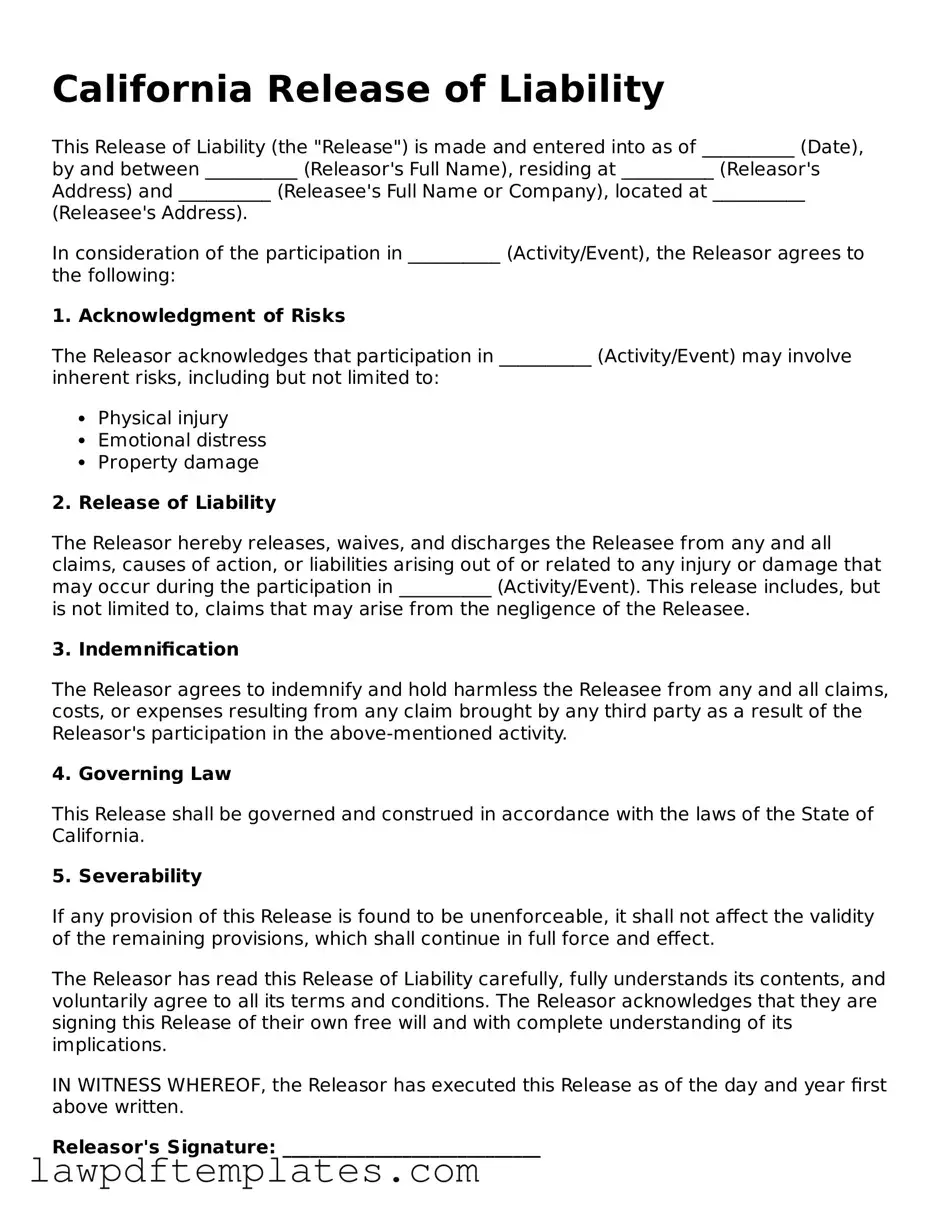California Release of Liability
This Release of Liability (the "Release") is made and entered into as of __________ (Date), by and between __________ (Releasor's Full Name), residing at __________ (Releasor's Address) and __________ (Releasee's Full Name or Company), located at __________ (Releasee's Address).
In consideration of the participation in __________ (Activity/Event), the Releasor agrees to the following:
1. Acknowledgment of Risks
The Releasor acknowledges that participation in __________ (Activity/Event) may involve inherent risks, including but not limited to:
- Physical injury
- Emotional distress
- Property damage
2. Release of Liability
The Releasor hereby releases, waives, and discharges the Releasee from any and all claims, causes of action, or liabilities arising out of or related to any injury or damage that may occur during the participation in __________ (Activity/Event). This release includes, but is not limited to, claims that may arise from the negligence of the Releasee.
3. Indemnification
The Releasor agrees to indemnify and hold harmless the Releasee from any and all claims, costs, or expenses resulting from any claim brought by any third party as a result of the Releasor's participation in the above-mentioned activity.
4. Governing Law
This Release shall be governed and construed in accordance with the laws of the State of California.
5. Severability
If any provision of this Release is found to be unenforceable, it shall not affect the validity of the remaining provisions, which shall continue in full force and effect.
The Releasor has read this Release of Liability carefully, fully understands its contents, and voluntarily agree to all its terms and conditions. The Releasor acknowledges that they are signing this Release of their own free will and with complete understanding of its implications.
IN WITNESS WHEREOF, the Releasor has executed this Release as of the day and year first above written.
Releasor's Signature: ____________________________
Date: ______________________________________
Witness Signature: ____________________________
Date: ______________________________________
